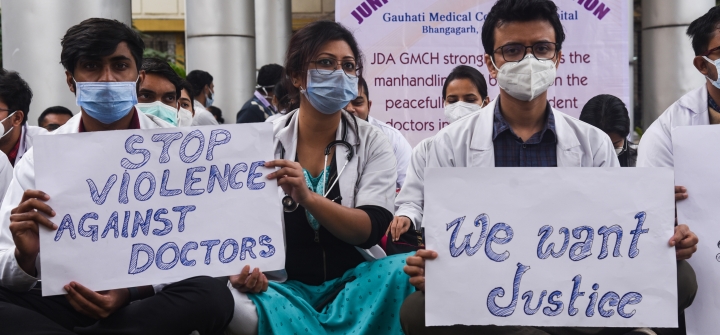When Will India End Violence Against Health Workers?
When we think of countries with high rates of violence against health care workers, we often think of countries embroiled in conflict. But in India, over 130 health care workers were attacked in 2020 alone, at the peak of the COVID-19 pandemic—at 5 times the global rate over the last few years and second only to Afghanistan in the South Asian region.
While laws that strongly reprimand such violence can send a strong signal that such attacks will not be tolerated, the response from the decision makers has been disappointing. Currently, no national-level law comprehensively and categorically addresses the issue. State laws vary: some places have weak laws, others weak enforcement—and 11 states and union territories have no laws at all.
In 2019, the Health Services Personnel and Clinical Establishments (Prohibition of Violence and Damage to Property) Bill was introduced in the Indian national parliament that would have propelled the country in the right direction. However, parliament rejected the bill, stating that such protections cannot be provided solely based on the profession as it might encourage people from other professions to make similar demands.
Such reasoning is flawed and against the public will—as a Change.org petition that has already amassed more than 1.46 million signatures makes clear.
Protections and rights based on professional backgrounds are provided in India in other cases. For instance, the Indian Penal Code Section 353 ensures that if a person assaults an Indian public servant (i.e., government employee) to deter them from their duty, the assailant is fined and/or imprisoned. Assaulting politicians, policemen, and those involved in any capacity with any branch of the armed forces invoke similarly heavy penalties. Yet health care workers—who face a high risk for violence while trying to save people’s lives—are somehow excluded from protection.
Demand for strong legal protections implemented adequately on the ground is neither new nor unique. Countries such as the UK, China, and most recently, India’s neighbor Nepal have passed laws to curb VAHCW. Some of these have also witnessed early success. For instance, China saw a drop in violence after 2015 when it passed its law. While a national-level law alone won’t be able to solve this complex and systemic problem, it would certainly be a crucial step. Evidence, advocacy, and activism efforts all point to the need for such legislation.
India needs to act on its violence against health care workers and it needs to act now.
Siddhesh Zadey BSMS, MScGH is a researcher in the Department of Surgery at Duke University School of Medicine in Durham, North Carolina, and a co-founder of the Association for Socially Applicable Research (ASAR), a non-governmental, non-profit think & do tank in India.
Join the 50,000+ subscribers in 170+ countries who rely on Global Health NOW summaries and exclusive articles for the latest public health news. Sign up for our free weekday newsletter, and please share the link with friends and colleagues.
Junior doctors protesting violence against doctors in Delhi, Gauhati Medical College Hospital in Guwahati, Assam, India. December 29, 2021. Image: David Talukdar/NurPhoto via Getty





